How do you analyze this web of data? How can you interpret this fascinating interconnected web of neurons? This was the first thing that came to mind. We travel down different paths/walks and find we are all interconnected to each other.
Yup, forgive my science excitement that is really showing through in this activity!!!

Firstly, I started looking through the groups. The setting had it highlighted on the curators (peers). I realized that I was looking to see if I was included in one of our groups.

This resulted in finding myself situated in group five with Laura and Sarah. It was interesting to see that the three of us had 4 songs in common. I additionally shared one song with Laura and two more with Sarah. I enjoyed Sarah’s meticulous analysis to break down into different groups and then into different locations. I enjoyed her process immensely.
This left 3 songs without a connection. This led me to look at a combination of other groups to see if those songs would all be captured. As I added the webs, my focus shifted to looking at the songs, so I highlighted those. Throughout this exploration, I went back to the entire class and discovered the intention of the analysis and how I wanted to show it.
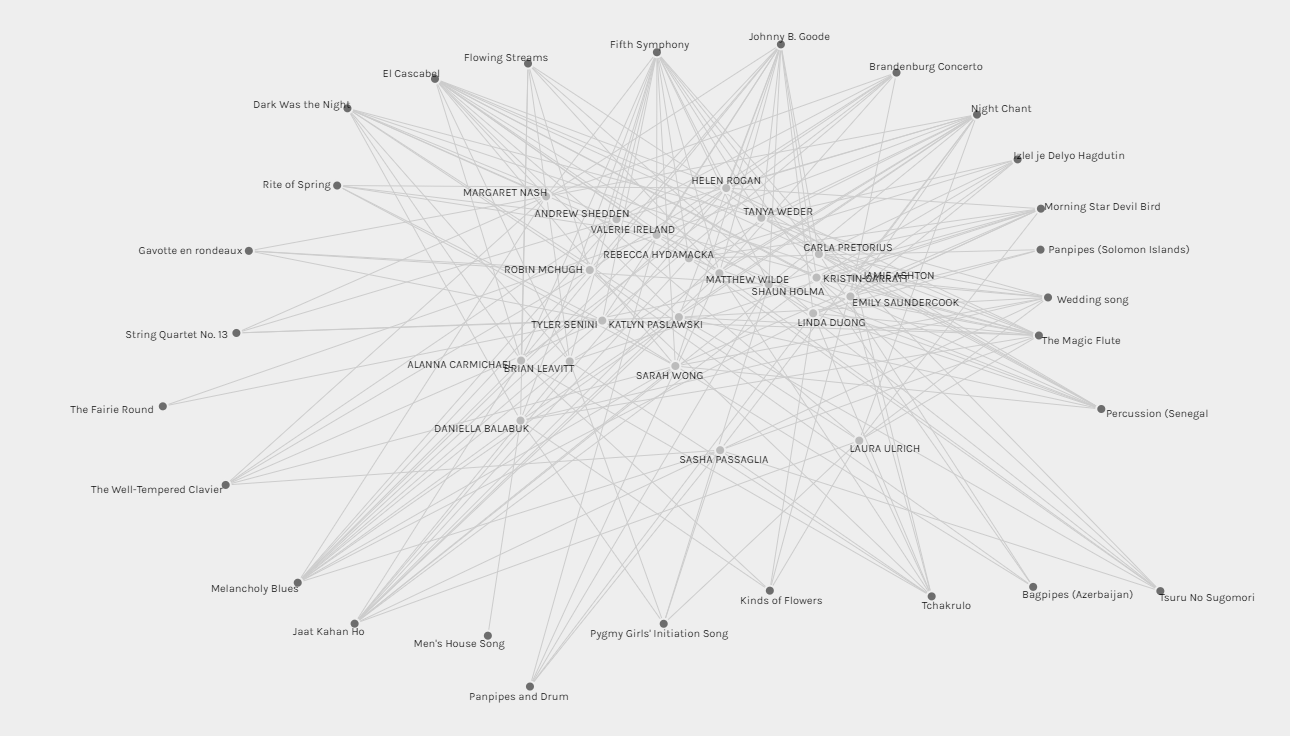
All songs were chosen! With our group collective, each song appears on at least one person’s list. Songs that I had quickly discarded were carefully cultivated by my classmates.
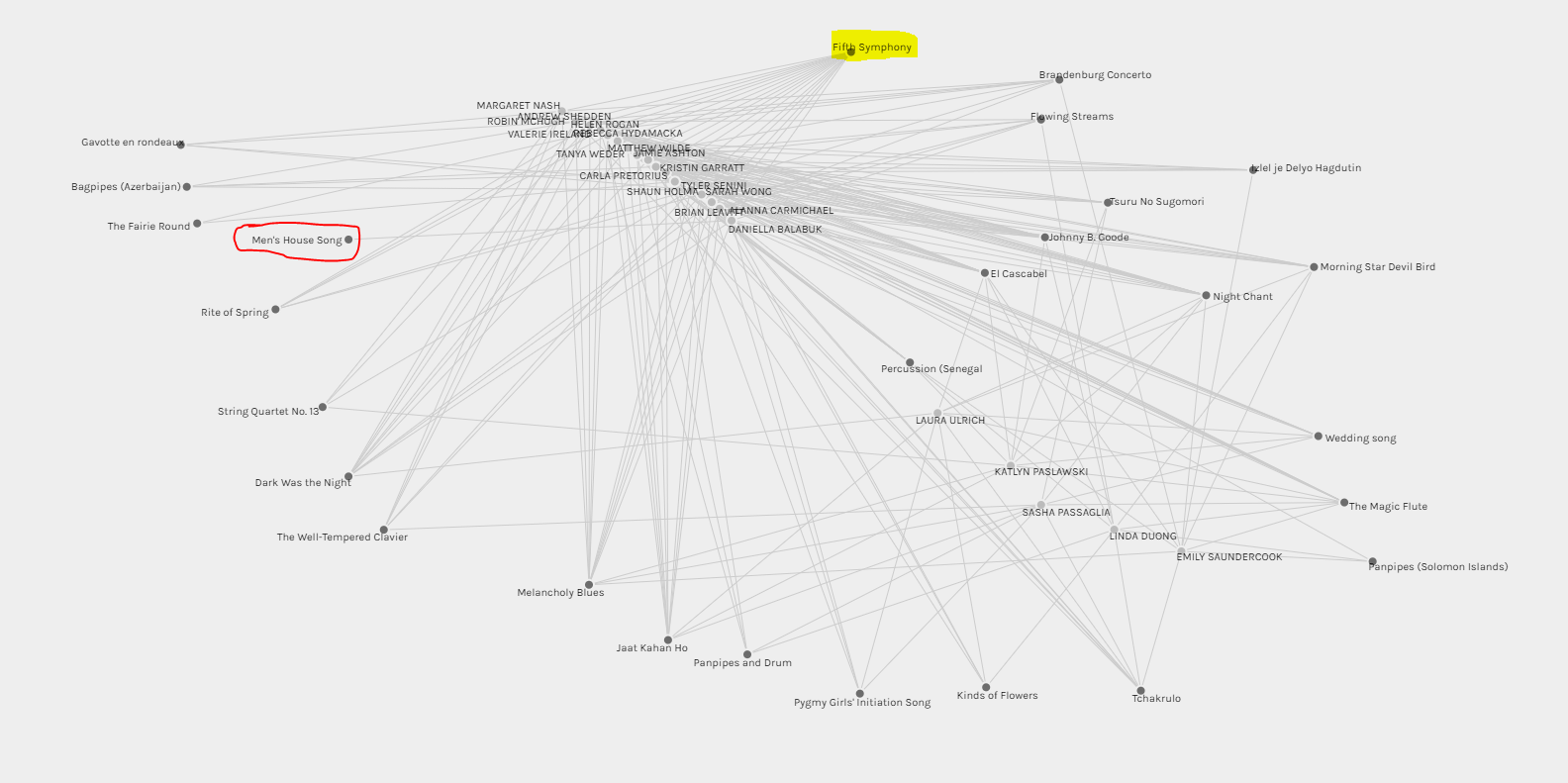
The Fifth Symphony was chosen by 17 class members (the most amount of any song), leaving five people who did not want it. Just for reference, the Men’s house song had only one vote. I moved the students who chose the 5th closer together to see if there were other songs that each subset had chosen without interacting with the other group.
The fifth symphony subgroup had included 5 other selections, which the second grouping did not.
- Gavotte en rondeau
- Bagpipes (Azerbaijan)
- The Fairie Round
- Men’s House Song
- Rite of Spring

The second group, while did not choose another song that excluded the fifth group, they each had included The Magic Flute on their list. This is the opera, while it is by Mozart, there does seem to be a reason to distinguish it from the other classical composers’ pieces.

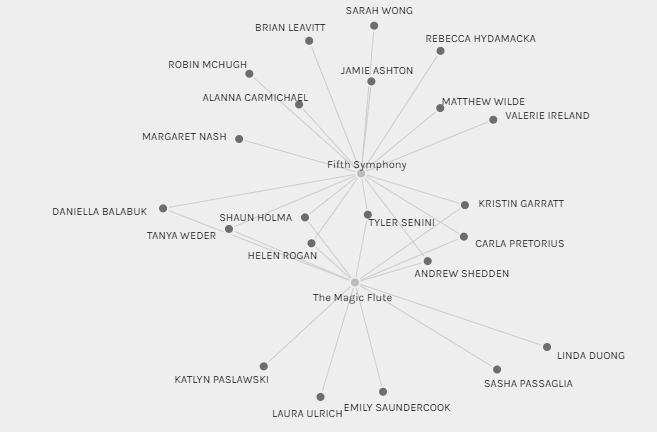
Finally, from this data set, I was curious to which of the 7 other people from the graph above that I had the most connections with. Would we have used the same criteria for selecting? Hopefully, using last week’s descriptions, I can gain insight into the null choices from the list.
While I shared an average of 4.5 connections with the rest of my classmates, Carla and I had 9 connections.
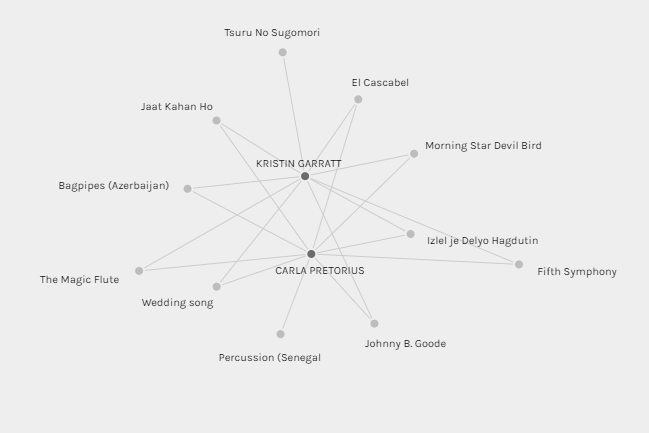 From previous courses together, I know that she also has a science background. I also remember reading her reflection and did not realize we had so many similar choices. Upon a second review, we did not have the same selection criteria at all. My only selection based on emotion was the fifth symphony, and that seems to be the sole basis of her list selection. Even though I attempted to include songs from different continents, was I biased with emotion? Did Carla still attempt to represent geography throughout her choices when she was listening for feelings? This has led to so many more questions.
From previous courses together, I know that she also has a science background. I also remember reading her reflection and did not realize we had so many similar choices. Upon a second review, we did not have the same selection criteria at all. My only selection based on emotion was the fifth symphony, and that seems to be the sole basis of her list selection. Even though I attempted to include songs from different continents, was I biased with emotion? Did Carla still attempt to represent geography throughout her choices when she was listening for feelings? This has led to so many more questions.
I need to stop at some point as this exploration could go on for another week. I thoroughly enjoyed this activity. It was so much fun to utilize my analytical mind again.
I think one needs to be careful when interpreting the graph’s data. This is just a starting point to begin a more in-depth analysis of what political implications and insight can be drawn. Many assumptions can be made; however, one must go deeper into the reasonings before making any concrete conclusions.
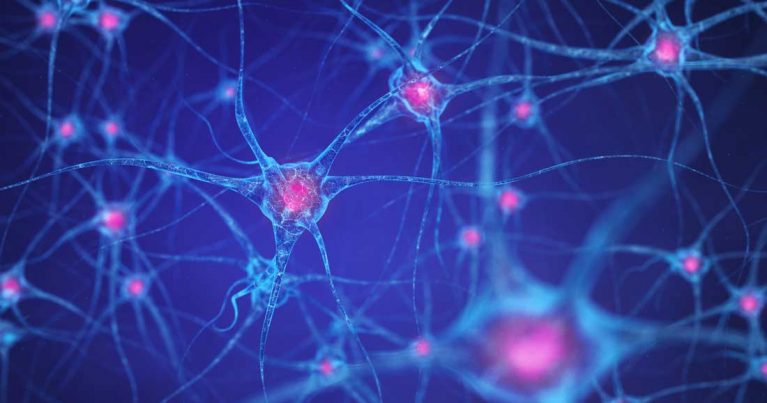
Hi Kristin,
Isn’t it interesting how the default algorithm grouped you with people you only shared 4 or 5 songs with, but there was someone you shared 9 with? This certainly makes the default groupings somewhat suspect. I suppose, however, that there is nothing saying what the groupings mean or what we are supposed to do with them. It is just our assumptions that would give them meaning, without having more information about how they are formed.
This makes me think about how technology and invisible or obtuse algorithms shape so much of our lives, and we often take them as objective ‘truth’ about the groups we are in, and the interests we have.